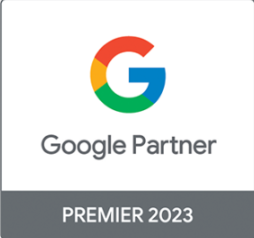Audience Targeting: Google Display Network
Display advertising is generally the most effective way of engaging with an audience digitally if they’re not directly researching or showing interest in your brand, product or service. Display ads are visually engaging ads on the Google Display Network.
The Google Display Network is a collection of more than 2 million Google properties/platforms such as websites, videos and apps where Google Ads may appear. Display ads are rendered graphically in a manner that allows them to stand out from various online content and grab the attention of the user.
Audience Targeting: Segments
Who will display ads appear to? Audiences may be narrowed down into relevant groups or segments that could be specifically targeted depending on the overall campaign objective. The segments are categorised visually along a funnel format indicating exactly how these groups are targeted to achieve the objectives of the campaign. It also provides an idea of how these groups may differ in size.
By targeting the relevant audience segments, the performance of the campaign can be improved.
Another component to be considered is demographics: age, gender, parental status and income. Defining these parameters narrows down the audience further, improving the probability of the ad being served to an audience that might actually interact with it because it appeals to their interests.
Audience Reach v/s Audience Intent
Affinity or Demographics: This is the largest group and sits at the top of the funnel. Their interests are very broad and mainly serve as a channel to fill the funnel with new site visitors. They are efficiently used on campaigns that have large budgets and the overall objective of creating mass awareness.
In-Market Audiences: Google marks this audience as showing “pre-purchase” behaviour. This could be by researching or simply viewing products online at a product category level.
Custom Intent Audiences: Google marks this group as showing “very specific purchase research” behaviour. They are granular audiences. An example would be someone showing signs of intent to buy a specific product or product type.
Remarketing: This includes people who have previously interacted with your business. They may even have viewed specific products without purchasing them. It is dynamic remarketing to re-serve site visitors with personal ads.
Audience Segments: They are defined in Google Analytics as they are very specific. Particularly based on “content consumed” and “onsite behaviours”. An example would be an audience created that visited a particular department, or category page and viewed a specific product. Further definitions may also be added to include and exclude certain actions by the user on the website.
Remarketing Audience Segments
The segments are best described using the following diagrams. The remarketing audience group may be further segmented according to their onsite behaviour. Their behaviour is mapped across different levels.
The typical marketing funnel visualisation can assist when selecting a target audience for a particular ad campaign. Targeting a specific segment may influence the overall performance of the campaign.
If you need assistance turning an audience strategy into an effective Google Ads campaign, feel free to speak to one of our paid media specialists.
Author : Selwyn Solomons



